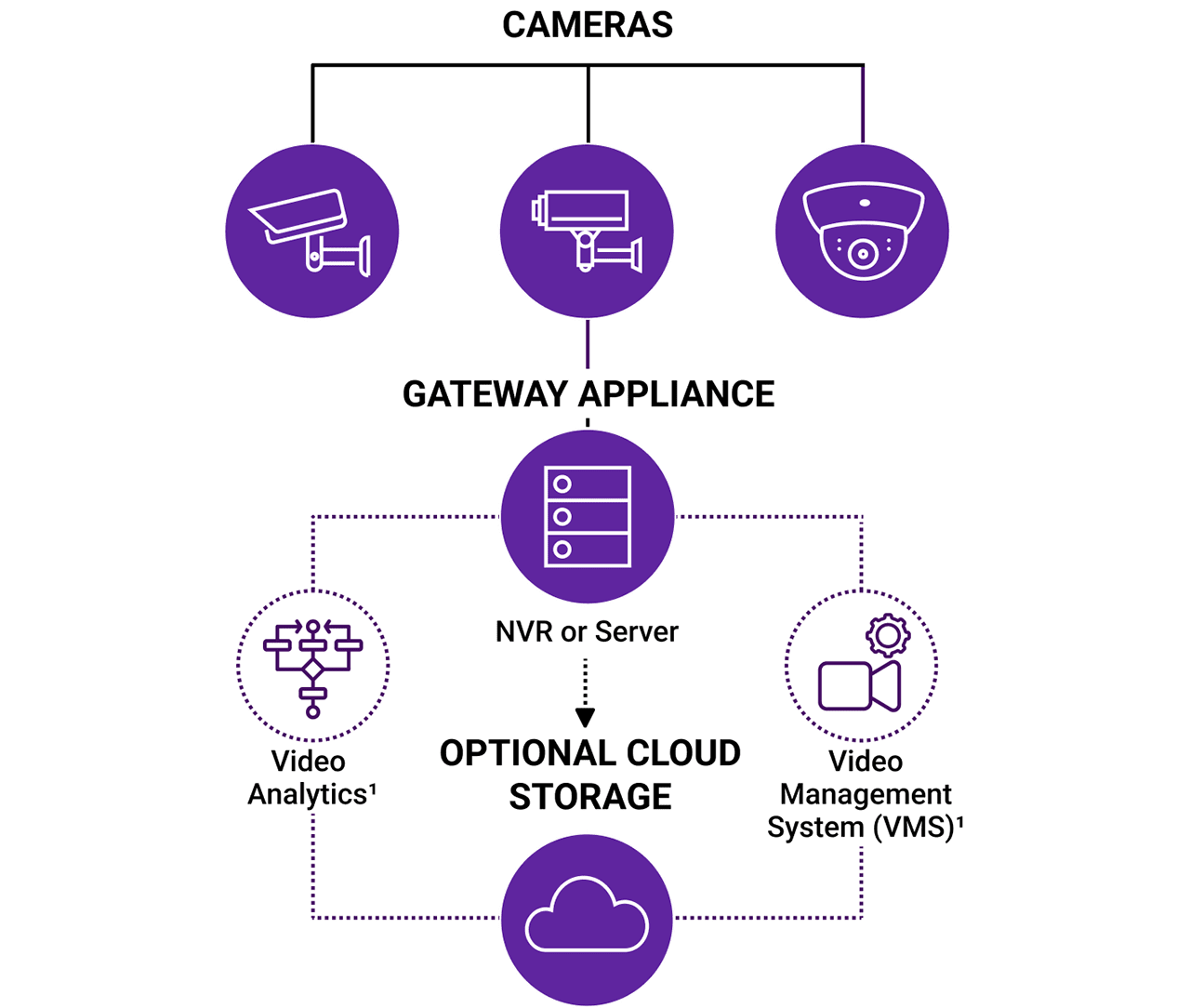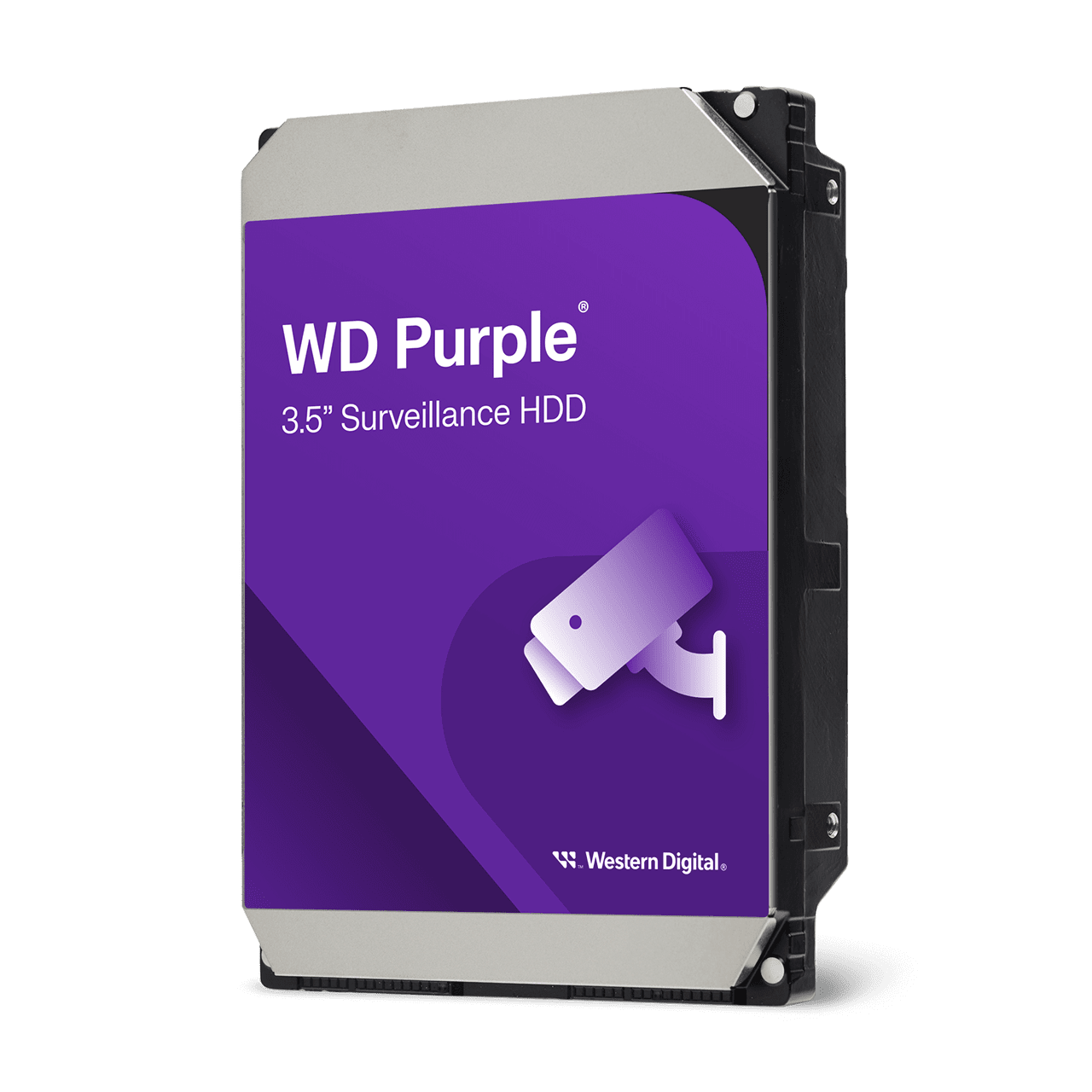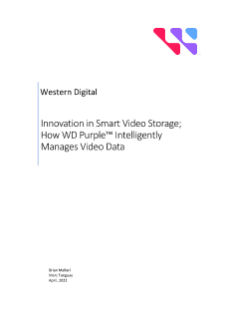Reliable Storage for Surveillance & CCTV
Unlock a new class of surveillance storage designed for AI, video analytics, and video management solutions.
Every Frame Matters.
Protect what matters most from small businesses to large corporate campuses and smart cities, to securing your business with WD Purple surveillance hard drives. Designed specifically for high temperature, always-on surveillance systems, WD Purple delivers reliable, high-quality video playback when you need it most because when every second counts, we save them all.
Why Choose WD Purple for CCTV & NVR Storage

Capture Every Moment with Confidence
AllFrame™ Technology ensures smooth playback and handles multiple cameras effortlessly, so you can trust your surveillance system to deliver clear, reliable video when you need it most.

Longer Durability and Warranty
WD Purple supports mainstream DVR or NVR systems in tough conditions up to 16 bays. Upgrade to WD Purple Pro for even greater peace of mind, with enhanced durability and a 5-year limited warranty.

Smart Security for A.I. and Analytics
Upgrade to WD Purple Pro for a future-ready solution that tackles advanced AI and video analytics with ease. Designed to handle smart surveillance systems, protect what matters most with mission critical technology that scales with you.
Explore WD Purple Surveillance Drives
Built to withstand temperature fluctuations, equipment vibrations, harsh environments, and tested for compatibility with a wide range of security and high-capacity gateway appliance systems.

Estimate the Right Storage for Your Surveillance System
Find the perfect WD Purple HDDs with our Surveillance Storage Capacity Estimator. Just input your setup details—like camera count, resolution, and recording time—and it’ll calculate your storage needs, guiding you to the right number and size of drives for your system.

HOW IT WORKS
Inside a Smart Surveillance Architecture
In a typical commercial surveillance system, such as the one illustrated here, video footage captured by security cameras in the field is transmitted and recorded by a gateway appliance, which could be either a network video recorder (NVR) or server.
This video data can just be stored in the gateway appliance, or optionally (and additionally) be stored in the cloud. Video Management System (VMS) and video analytics software could reside on the gateway appliance and/or the cloud.
Click Here to Learn How 4K Cameras and AI Analytics Are Overloading Your Surveillance Storage.
Videos, Blogs & Use Cases in Surveillance

Celebrating 10 Years of Reliability, Innovation and Trust
First to market and leading the way in smart video surveillance
CCTV & Surveillance Storage FAQs
CCTV and smart video surveillance systems generate continuous video streams that demand storage built for 24/7 operation. Unlike standard desktop hard drives, surveillance-class drives are purpose-built to manage high write workloads, reduce frame loss, and operate reliably in challenging environments—such as outdoor enclosures or industrial installations.
If you're wondering about the difference between surveillance and desktop HDDs, it comes down to durability and performance. Desktop drives are designed for intermittent use and lighter workloads, while surveillance drives like WD Purple and WD Purple Pro are optimized for constant video recording across multiple streams.
WD Purple and WD Purple Pro drives offer:
- Optimized performance for multi-camera CCTV and NVR setups
- Support for continuous recording (24/7 operation)
- Resistance to high temperatures and humidity
- Health monitoring (when used in compatible systems)
Find the smart video storage solution for your needs
Disclosures
- Workload Rate is defined as the amount of user data transferred to or from the hard drive. Workload Rate is annualized (TB transferred ✕ (8760 / recorded power-on hours)). Workload Rate will vary depending on your hardware and software components and configurations.
- See https://www.westerndigital.com/support/store/warranty-policy for regional specific warranty details.





